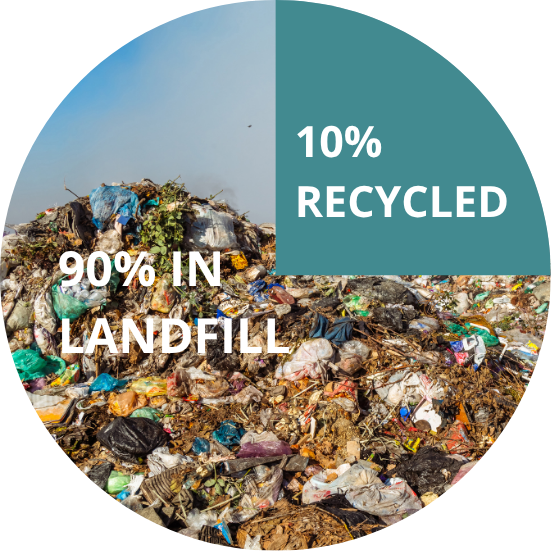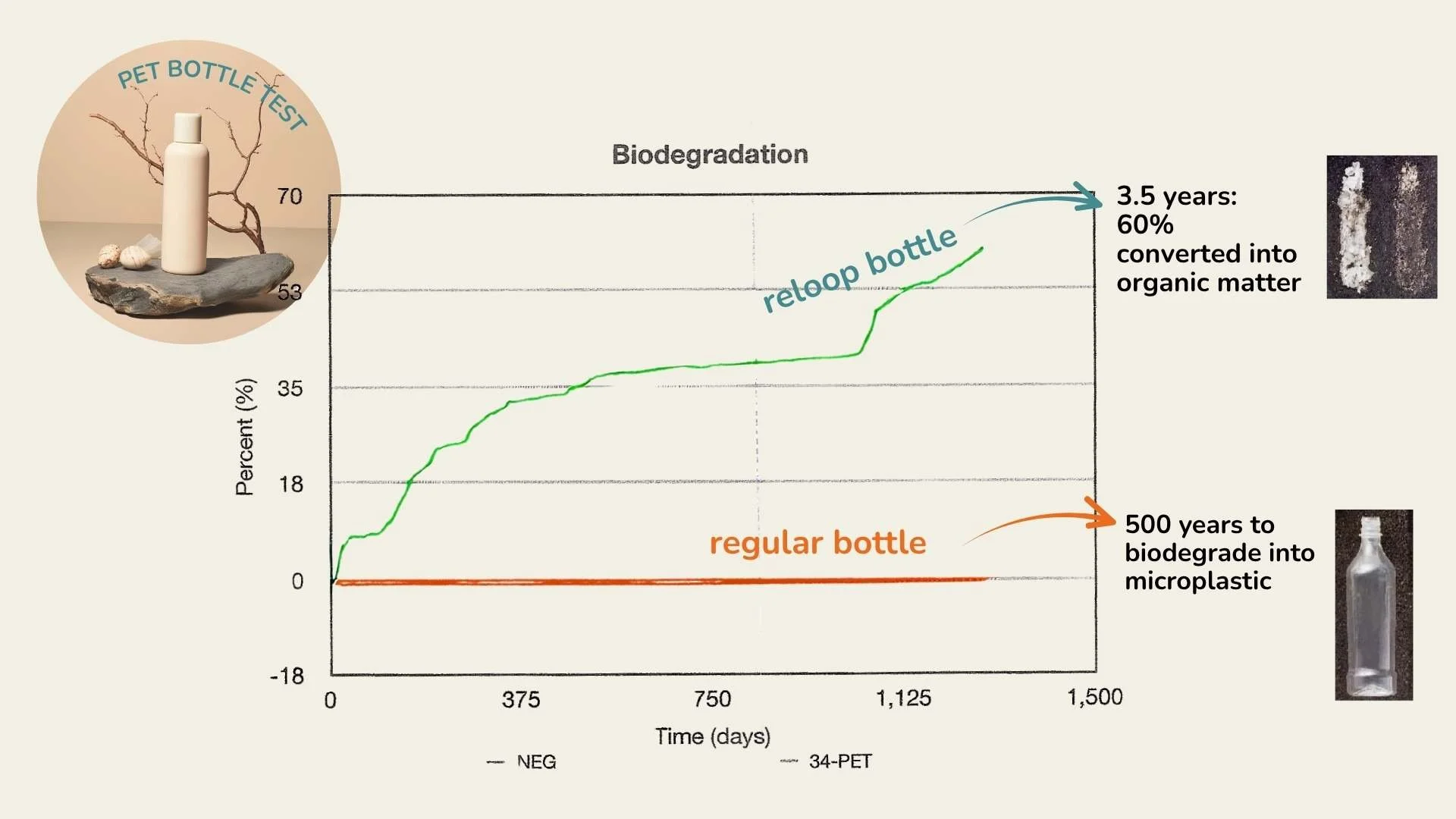What Happens When Plastic Ends Up in Landfill? A Peek Inside the Microbial World
We like to think that when we toss plastic into a bin — recycling or not — it just goes away. But the truth is, over 90% of plastic ever produced still exists somewhere on the planet. Most of it ends up in landfill, where it’s buried and forgotten… or so we hope.
But what actually happens to plastic in landfill?
Let’s take a closer look, not just at the layers of waste, but at the hidden microbial world that could hold the key to plastic’s smarter end of life.Landfill: Where Most Plastic Really Goes
Despite years of sustainability pledges and recycling campaigns, global data shows that only about 9% of plastic is recycled. The rest? Around 12% is incinerated, and a staggering 79% ends up in landfills or the natural environment.
Why does this matter? Because traditional plastic, PET, rPET, HDPE, LDPE, PP, is not designed to degrade under landfill conditions. It stays inert, unchanged, for hundreds of years.
That’s where Reloop™ steps in — to offer a cleaner microbe-powered alternative.
The Science of Breakdown: Microbes, Biofilms & Enzymes
When a Reloop-treated plastic product ends up in landfill, it behaves just like any conventional plastic… at first.But unlike regular plastic, it’s been engineered to respond to microbes — the billions of tiny organisms that thrive in the anaerobic (low oxygen), organic-rich conditions of landfills.Here’s how it works:
Microbes are attracted to the plastic's surface by organic compounds in the additive.
They begin to colonise the plastic, forming a biofilm (a thin layer of microbial life).
These microbes then secrete enzymes that start to break down the long polymer chains in the plastic.
The plastic is gradually converted into organic matter: CO₂, water, and biomass without leaving behind microplastics.
This isn’t an abiotic process (like oxo-degradable plastics that simply fragment into smaller pieces). It’s true biological degradation — and it only begins once the plastic is in the right microbial environment. It’s true biological degradation and it only begins once the plastic is in the right microbial environment.
A Case Study in Action: PET Bottle, ASTM D5511 Test
To show what happens in the real world, we tested a Reloop-treated PET bottle under ASTM D5511, a globally recognised third-party standard for simulating landfill conditions.
Reloop-treated PET: 60% biodegradation in 3.5 years*
Untreated bottle: 0% biodegradation
*These results are based on the time limits set by the test protocol but biodegradation continues beyond that in real-world conditions, eventually converting the plastic fully into carbon dioxide, water, and biomass.
Why This Matters for Brands (and the Planet)
Most packaging still ends up in landfill and pretending otherwise won’t fix the problem. Instead of banking on perfect recycling or perfect consumer behavior, brands can now design for reality.Reloop™ gives plastic a second chance, a built-in end-of-life plan that doesn’t depend on luck or expensive infrastructure. It’s packaging that protects your product, your brand, and the planet.Because plastic that ends up in landfill shouldn’t last forever. It should go back to nature.Want to Learn More?
Explore how Reloop can integrate into your existing packaging, work with your supply chain, and give your brand an edge in the sustainability conversation.
Book in a discovery call here.


